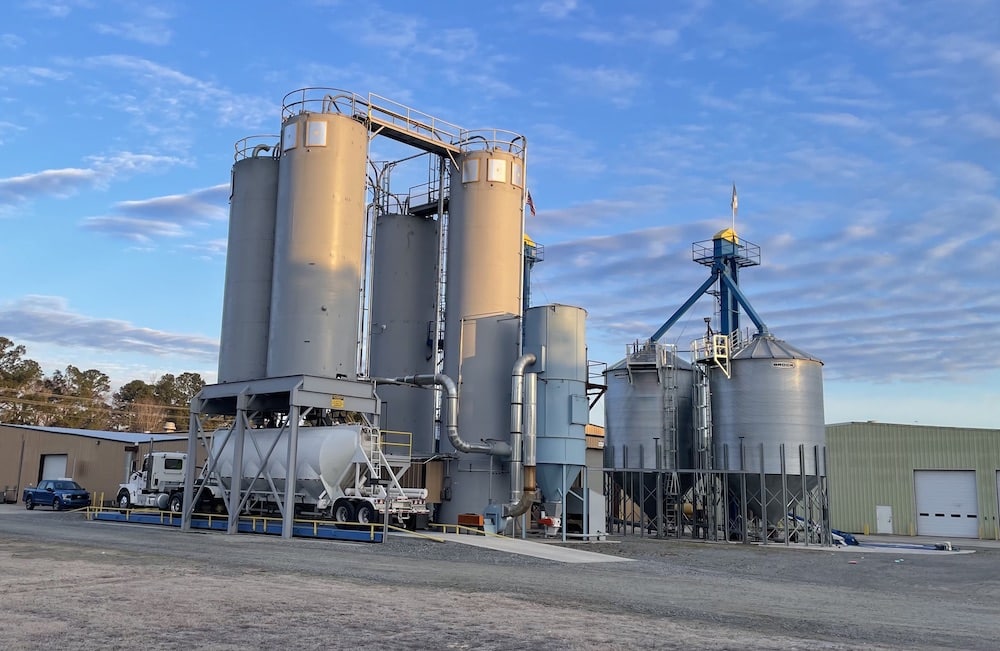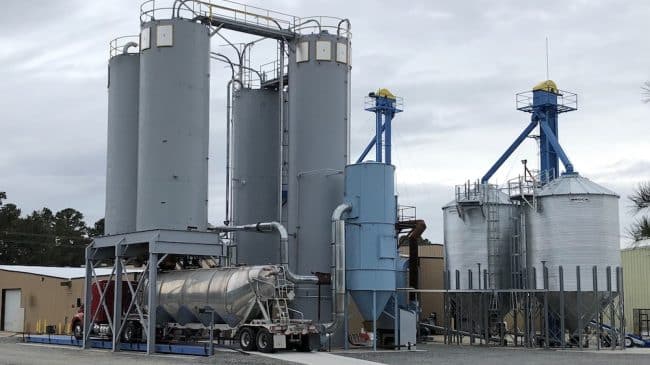
How Proper Silo Storage Extends the Shelf Life of Milled Materials
Shelf life isn’t a secondary concern when it comes to milling; it’s central to delivering consistent, reliable product to your customers. Even high-quality milled materials can degrade quickly without the right post-processing care. That’s why proper silo storage is necessary.
Think of it as the final mile of protection for all the work you’ve already done.
Shelf Life 101: What’s at Stake
Shelf life refers to the period during which milled materials remain usable, stable, and within spec. For powders, grains, or specialty blends, this window can shift depending on how they’re stored. Moisture intrusion, temperature swings, and pest exposure can rapidly reduce product integrity.
Spoiled or contaminated material doesn’t only cost money…it damages reputation and affects daily operations. Recognizing how and why degradation happens puts the value of proper storage into perspective.
Why Silo Storage Holds Up Over Time
What’s the difference between a silo and a storage tank? Silos are designed for storing dry bulk goods like powders, pellets, and grains. Storage tanks, on the other hand, are typically used for liquids or semi-liquids and often need different types of seals, coatings, and discharge setups. If you’re storing dry milled material, a silo’s the tool for the job.
Storage silos give operators direct control over the conditions that influence shelf life. Compared to bags, bins, or bulk warehouses, it offers more consistent protection from outside variables. It reduces handling, which limits exposure to airborne contaminants and inconsistencies.
Think of it this way: fewer touchpoints, fewer problems. When equipped with moisture and temperature controls and FIFO functionality, silo storage is a reliable solution for longer-term material management.
How long can milled materials stay in a silo? That depends on what you’re storing and how dialed-in your setup is. With proper controls in place, materials can stay in good shape for weeks or even months. Without them, you might be looking at a fraction of that.
Getting Silo Storage Right from the Start
Can I retrofit my current silo to help with shelf life? In many cases, yes. Adding airflow, insulation, or even a simple FIFO discharge system can make a noticeable difference without rebuilding from the ground up.
To get the most out of silo storage, these basics must be in place:
- Moisture control: Even slight humidity can cause clumping, microbial growth, and spoilage. Silo systems should be sealed and supported by dehumidifiers or desiccants.
- Temperature regulation: Shifts in weather can impact internal silo conditions. Insulated walls or active cooling systems help reduce those effects.
- Ventilation and airflow: Still air inside a storage silo is asking for trouble. You want steady, controlled movement to keep hot spots and moisture at bay.
- Pest prevention: Tightly sealed silos, paired with frequent inspection and clean-up, limit infestation risk.
- FIFO handling: Smart flow design makes sure older materials get used before newer ones, avoiding expired inventory. It’s a basic rule that makes a big difference.
Check out our article on In-House vs. Outsourcing Bulk Material Conveying – it breaks down what to keep in mind when moving material at scale.

Different Materials, Different Needs
Not all milled materials respond the same to storage.
- Powders are extremely sensitive to moisture and can compact.
- Grains can tolerate more variation but are still prone to heat and insect damage.
- Organic materials break down faster and demand tighter control.
Silo storage setups should be chosen based on the specific material, not the average case. If you’re storing everything the same way, something’s likely getting shortchanged.
Trying to figure out what kind of processing support you really need? Read our guide on Questions to Ask Before Contacting a Toll Processor.
Storage Works Best When You Keep an Eye on It
What kind of maintenance does a silo need?
No storage system takes care of itself. Proper function depends on routine cleanouts, checks for wear, and ongoing tracking with sensors for temperature and humidity. Automated alerts help spot problems early before they affect a batch. Regular upkeep is part of getting full use out of your equipment.
The Payoff: Efficiency, Quality, and Confidence
When silo storage works the way it should, the benefits speak for themselves. Materials stay usable longer, waste goes down, and quality remains consistent. Fewer product issues, smoother production, and fewer delays all add up. And cutting spoilage while improving output gives a direct boost to return on investment.
Ask any seasoned operator — storage done right is storage you don’t have to think about every day.
Ready to Upgrade Your Storage Strategy with M&M Milling?
Let’s talk. At M&M Milling we don’t only process materials, we help protect them. If you’re checking your current storage silo setup or making plans for added capacity, we’re here to help. We’ve seen what works, and we’ll steer you in the right direction.
Beyond storage we offer powder processing, blending, packaging, and transloading services to support your operation from start to finish.
Contact the M&M team to learn how silo storage (and everything else we do) can improve your shelf life and bottom line.